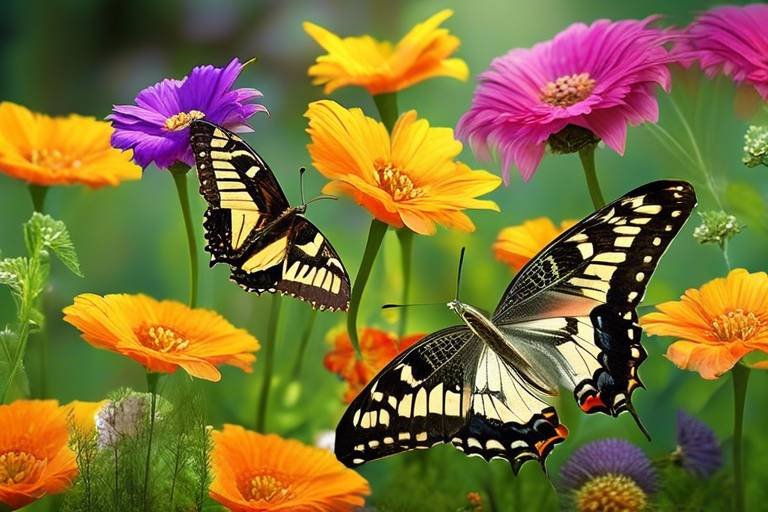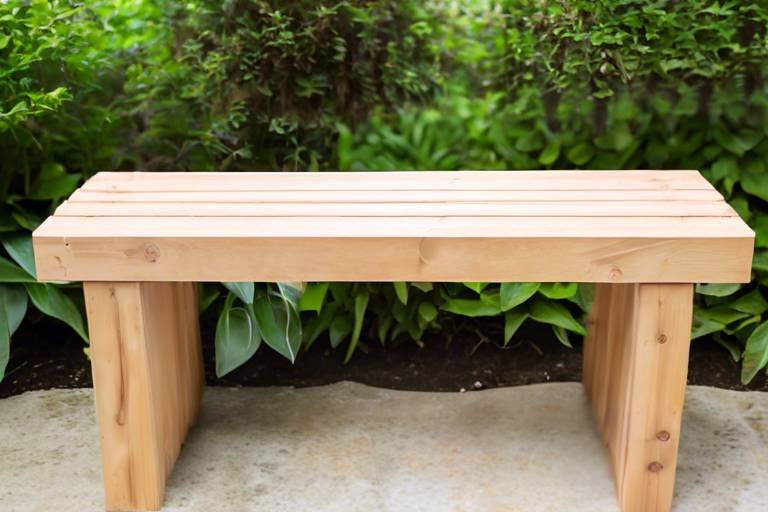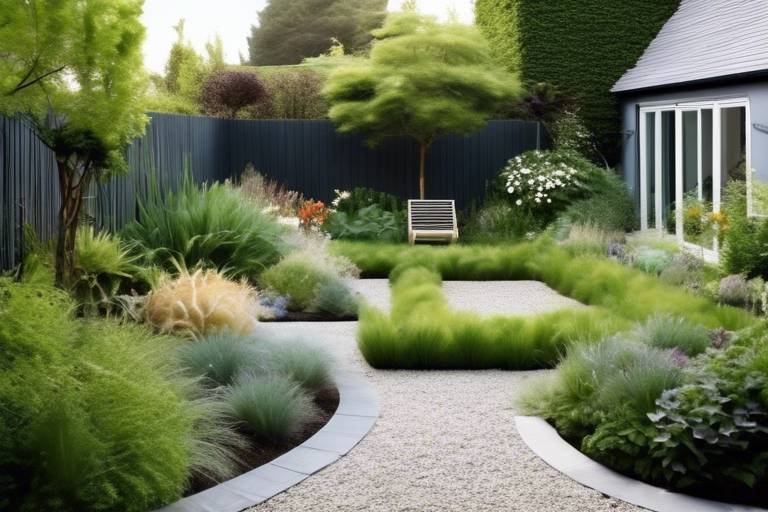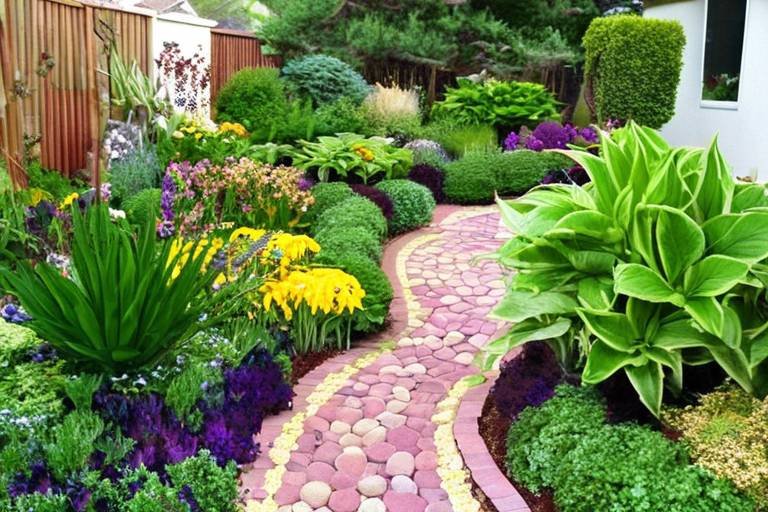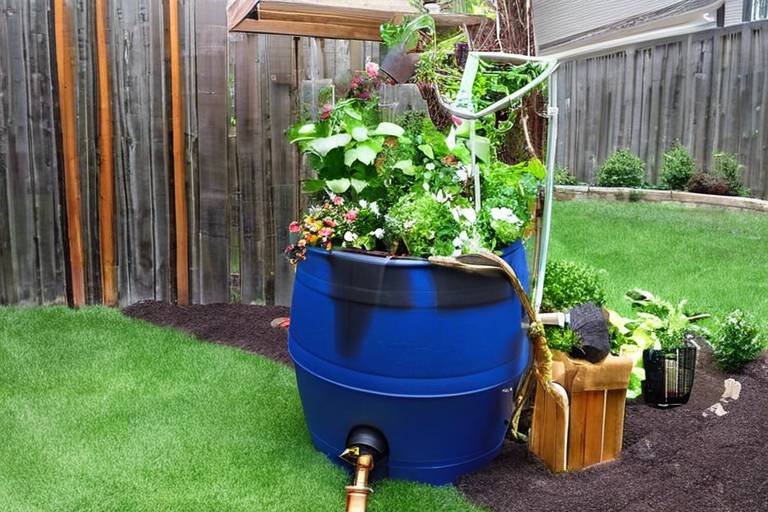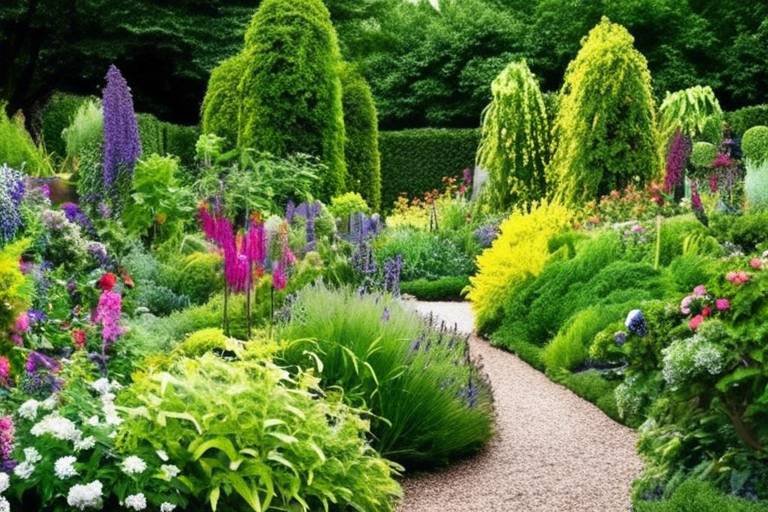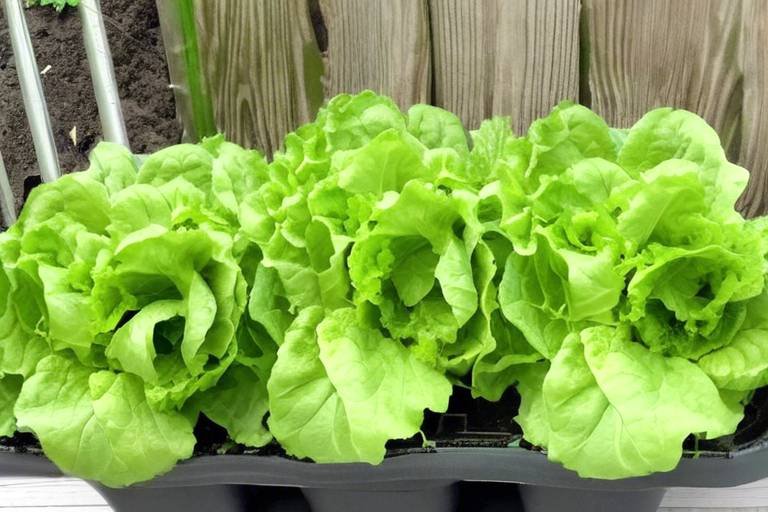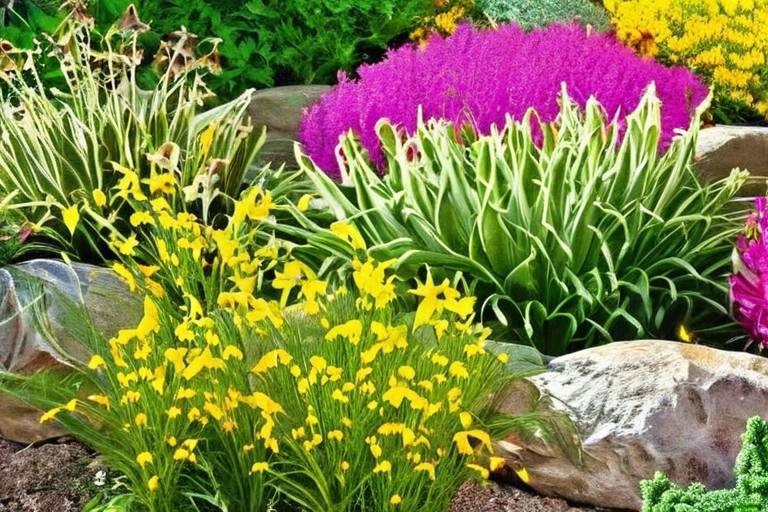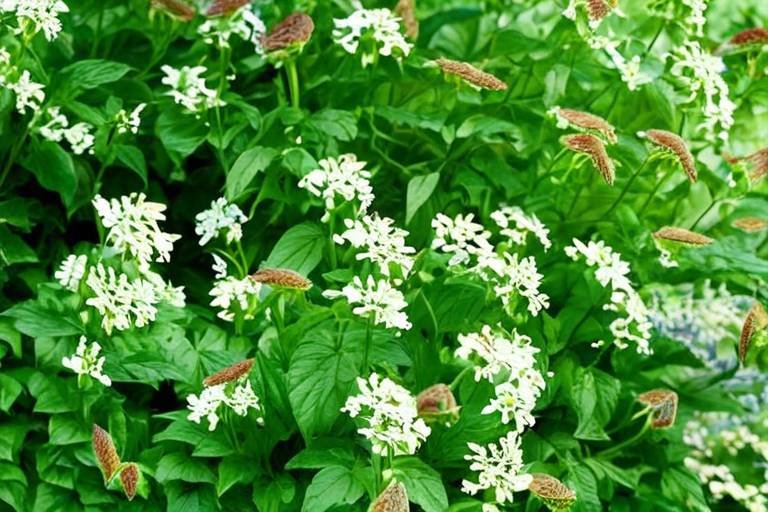How to Create a Butterfly Garden
Creating a butterfly garden is a delightful way to invite these beautiful creatures into your backyard while also playing a role in supporting the ecosystem. By following a few simple steps and tips, you can transform your outdoor space into a colorful haven for butterflies to thrive. Let's explore the key elements involved in creating a butterfly garden that will attract these winged wonders.

Choose the Right Plants
When creating a butterfly garden, one of the essential steps is to that will attract these beautiful creatures to your outdoor space. By selecting nectar-rich flowers such as milkweed, lavender, coneflowers, and other blooming plants, you can create a welcoming environment for butterflies.
These plants not only add vibrant colors to your garden but also serve as essential food sources for butterflies. Imagine your garden as a buffet spread for these delicate insects, offering them a feast for their nourishment and enjoyment.
Additionally, consider including host plants like dill, fennel, and parsley in your garden. These plants are crucial for butterfly larvae to feed on and complete their life cycle. It's like setting up a nursery for the future generation of butterflies, ensuring their survival and continuity in your garden.
Furthermore, creating a sunny spot for your butterfly garden is key. Butterflies are naturally drawn to warmth and light, so selecting a location that receives ample sunlight will make your garden even more attractive to these winged visitors. Picture your garden as a sunlit paradise, inviting butterflies to bask in its radiance.

Provide Shelter and Water Sources
When creating a butterfly garden, it is crucial to provide shelter and water sources to attract and support these delicate creatures. Butterflies need safe spaces to rest and access to water for hydration, making this aspect of garden planning essential for their well-being.
One way to provide shelter for butterflies is by incorporating rocks or shrubs in your garden. These elements create hiding spots where butterflies can seek refuge from predators or inclement weather. Additionally, sheltered areas offer resting places for butterflies to bask in the sun and warm their wings.
In addition to shelter, offering water sources is equally important. Butterflies require water not only for hydration but also for essential activities like puddling. You can create a shallow water feature, such as a birdbath with rocks for perching, to provide butterflies with a drinking spot. This simple addition can attract a variety of butterfly species to your garden.
By incorporating sheltered areas and water sources in your butterfly garden, you are not only enhancing the habitat for these beautiful insects but also creating a welcoming environment where they can thrive and contribute to the ecosystem.

Planting Host Plants
When it comes to creating a butterfly garden, one essential aspect to consider is planting host plants. Host plants play a crucial role in the lifecycle of butterflies, as they provide a food source for butterfly larvae. These plants are specifically chosen because they are the preferred food of caterpillars and support their growth and development.
Some popular host plants that you can include in your butterfly garden are dill, fennel, and parsley. These plants not only attract butterflies to lay their eggs but also provide a sustainable food source for the emerging caterpillars. By incorporating host plants into your garden, you are creating a welcoming environment for butterflies to complete their life cycle.
Imagine your garden as a bustling restaurant where caterpillars are the hungry customers eagerly devouring their favorite dishes. The host plants serve as the main course, sustaining the caterpillars and ensuring their transformation into beautiful butterflies. It's a harmonious cycle of life that adds a dynamic element to your garden.

Creating a Sunny Spot
When creating a butterfly garden, one crucial factor to consider is selecting a sunny spot for the garden. Butterflies are creatures of warmth and light, so providing them with a sunny location is essential to attract these beautiful insects to your garden. Imagine a sunny spot as a welcoming invitation to butterflies, drawing them in with the promise of basking in the sun's rays and fluttering among the vibrant flowers.
To create the ideal sunny spot, look for an area in your backyard that receives ample sunlight throughout the day. Butterflies thrive in sunny environments, so choosing a location with direct sunlight will make your garden irresistible to these delicate creatures. Picture the garden as a sunlit paradise, where butterflies dance gracefully in the golden light, adding a touch of magic to your outdoor space.

Avoid Pesticides
When creating a butterfly garden, it is crucial to to protect these delicate creatures and maintain a healthy ecosystem. Pesticides can be harmful not only to butterflies but also to their caterpillars and other beneficial insects in the garden. Instead of using chemical pesticides, opt for natural pest control methods that target specific pests without harming butterflies.
One effective way to is by introducing beneficial insects that prey on garden pests, such as ladybugs or lacewings. These natural predators can help keep pest populations in check without the need for harmful chemicals. Additionally, practicing crop rotation and companion planting can deter pests and promote a balanced ecosystem in your butterfly garden.
Creating a diverse and resilient garden ecosystem is key to avoiding pesticides. By planting a variety of flowers and herbs, you can attract beneficial insects that act as natural pest controllers. For example, marigolds can repel harmful insects, while mint can attract predatory insects that feed on pests. This natural approach not only protects butterflies but also enhances the overall health of your garden.

Maintaining the Garden
When it comes to maintaining your butterfly garden, there are a few key tasks that will help ensure the health and vibrancy of the space for both the butterflies and your enjoyment. Regular maintenance is essential to keep the garden looking its best and to provide a welcoming environment for these delicate creatures.
One important aspect of maintaining the garden is to keep up with watering needs. Butterflies are attracted to moist soil, so it's crucial to water the garden regularly, especially during dry spells. However, be mindful not to overwater, as this can lead to root rot and other issues. Finding the right balance is key to supporting both the plants and the butterflies.
Weeding is another essential task in garden maintenance. Removing weeds not only keeps the garden looking tidy but also prevents competition for resources with the butterfly-friendly plants you've carefully chosen. Regular weeding will help the plants thrive and create a welcoming environment for butterflies to visit.
Pruning is also a vital part of maintaining a butterfly garden. Trimming back overgrown plants not only improves the overall appearance of the garden but also helps promote healthy growth. Pruning encourages new growth and flowering, providing more nectar-rich blooms for butterflies to enjoy. It's important to prune selectively and at the right times to avoid disrupting the garden's ecosystem.
In addition to these tasks, it's essential to monitor the garden for any signs of pests or diseases. While you want to avoid using chemical pesticides that can harm butterflies, there are natural methods for pest control that can help protect your plants. Inspecting the garden regularly allows you to catch any issues early and take appropriate action to maintain a healthy environment for both plants and butterflies.
By staying on top of watering, weeding, pruning, and pest control, you can ensure that your butterfly garden remains a thriving oasis for these beautiful insects. Regular maintenance not only benefits the garden but also provides you with the opportunity to connect with nature and observe the fascinating world of butterflies up close.

Observing and Enjoying
Once your butterfly garden is established, it's time to sit back, relax, and enjoy the beauty it brings. Observing butterflies fluttering around, sipping nectar from flowers, and basking in the sunlight can be a truly mesmerizing experience. It's like witnessing a delicate dance of nature right in your backyard.
Imagine spending a quiet morning in your garden, savoring a cup of coffee while colorful butterflies gracefully flit from flower to flower, adding a touch of magic to your surroundings. The vibrant hues of their wings and the gentle fluttering sounds create a serene ambiance that soothes the soul.
As you immerse yourself in this enchanting world, take the time to observe the behavior of these winged wonders. Notice how they delicately land on flowers, gently opening and closing their wings as they drink nectar. Each butterfly species has its unique characteristics and habits, adding to the intrigue of your garden.
Documenting your butterfly encounters can be a rewarding activity. Keep a journal or log of the different species that visit your garden throughout the seasons. Note their preferred flowers, flight patterns, and any interesting behaviors you observe. This record can serve as a personal diary of your butterfly garden journey.
Moreover, you can take your passion for butterflies a step further by engaging in citizen science initiatives. Participating in butterfly monitoring programs allows you to contribute valuable data on butterfly populations and trends. By sharing your observations with scientific organizations, you play a crucial role in conserving these delicate creatures.

Documenting Butterfly Species
Documenting butterfly species in your garden can be a fascinating and rewarding experience. By keeping a journal or log of the different butterfly species that visit your garden, you can track their behaviors, migration patterns, and preferences. This documentation not only helps you appreciate the diversity of butterflies but also contributes to scientific research and conservation efforts.
One way to document butterfly species is to create a simple table listing the date, time, and species of butterflies observed. You can also include notes on their activities, such as feeding, mating, or resting. This organized approach allows you to easily track and identify the various butterflies that grace your garden.
Additionally, consider taking photographs of the butterflies you encounter. Visual documentation can provide valuable insights into the colors, patterns, and markings of different species. These images can also serve as a visual record of your garden's butterfly inhabitants, capturing their beauty and diversity.
Furthermore, you can create a section in your journal dedicated to each butterfly species you observe. Include details such as their scientific name, common name, habitat preferences, and any interesting behaviors you notice. This detailed information not only enhances your understanding of butterflies but also serves as a valuable resource for future reference.

Engaging in Citizen Science
Engaging in Citizen Science involves actively participating in butterfly monitoring programs to contribute valuable data on butterfly populations and trends. By joining these programs, individuals can play a crucial role in scientific research and conservation efforts. Citizen scientists collect data on butterfly species, population sizes, migration patterns, and habitat preferences, providing researchers with valuable insights into the health of butterfly populations.
Through Citizen Science initiatives, individuals can learn more about butterflies, their behaviors, and the factors affecting their survival. This hands-on approach to scientific research allows participants to connect with nature, gain a deeper understanding of ecological processes, and contribute to meaningful conservation projects. By engaging in Citizen Science, people of all ages can make a positive impact on butterfly populations and help protect these delicate creatures for future generations.
Frequently Asked Questions
- What are the best plants to attract butterflies to my garden?
To attract butterflies, consider planting nectar-rich flowers such as milkweed, lavender, coneflowers, and butterfly bush. These plants provide essential food sources and attract a variety of butterfly species.
- How can I create a sheltered area for butterflies in my garden?
You can create sheltered areas for butterflies by incorporating rocks, shrubs, or tall grasses where butterflies can rest and seek protection from the wind. Providing different heights and textures in your garden helps create diverse shelter options for butterflies.
- Why is it important to avoid pesticides in a butterfly garden?
Pesticides can be harmful to butterflies and their caterpillars, disrupting their life cycle and causing population declines. Opting for natural pest control methods like companion planting and handpicking pests helps protect butterflies while maintaining a healthy garden ecosystem.
- How can I identify different butterfly species visiting my garden?
Observing the physical characteristics, behaviors, and feeding preferences of butterflies can help in identifying different species. Using field guides, online resources, or apps dedicated to butterfly identification can also aid in recognizing and documenting the butterfly species in your garden.
- What is the significance of engaging in citizen science programs for butterflies?
Participating in citizen science programs focused on butterflies allows individuals to contribute valuable data on butterfly populations and trends. By monitoring and reporting butterfly sightings, participants help researchers track changes in butterfly populations and inform conservation efforts.

